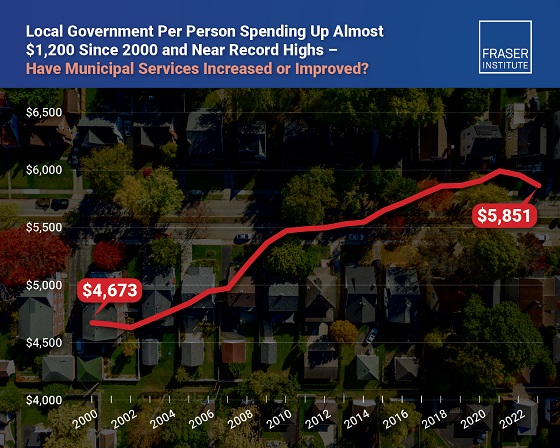News
Around Red Deer May 8th…..
1:44 pm – Earl Dreeshen, Member of Parliament for Red Deer – Mountain View joined an all-party delegation in Washington from May 1-4. The meetings were broad in range but were primarily focused on issues relating to industry, science, and technology. Among the key items discussed were trade issues and how it affects industries on both sides of the border. Dreeshen and his colleagues met with Senators, Members of Congress, and various government and agency officials in this regard.
1:39 pm – The Smiles Thru Lindsey Foundation has committed $10,000 in funding that will go towards a Mental Health First Aid program at Red Deer Catholic Regional Schools (RDCRS). This training course will continue to help staff provide initial support to someone who may be developing a mental health problem or experiencing a mental health crisis. Read More.
For more local news, click here!
10:31 am – Good news to pass along regarding a missing Ponoka woman. RCMP say 22 year old Nikita Rabbit has now been located safe.
10:27 am – The City of Red Deer wants you to know the risks during Emergency Preparedness Week. Read More.
10:26 am – The Town of Innisfail is marking Emergency Preparedness Week with numerous events and activities. Read More.
For more local news, click here!
10:12 – Street sweeping resumes in the Town for All Seasons again today. Read More.
10:10 am – Attention Sylvan Lake gardeners! A Community Garden Meeting is taking place at the Sylvan Lake Family And Community Centre from 7:00 – 8:30 pm tonight. Read More.
10:02 am – Residential street sweeping continues in Lacombe today. Details here.
For more local news, click here!
9:54 am – It’s Emergency Preparedness Week. Officials with the Town of Blackfalds want to make sure you and your family are prepared. Find out here.
9:44 am – Residential sweeping will continue in Red Deer today on Grey Routes in the following neighbourhoods: Morrisroe Extension, Morrisroe, Sunnybrook, Anders Park, Anders Park East and Anders South. Click here for details.
9:33 am – So who’s responsible for mowing in Red Deer County? Find out here.
For more local news, click here!
9:08 am – Blackfalds RCMP have recovered some stolen property that includes an urn with cremated ashes inside. Read More.
8:47 am – A 33 year old Stettler man is facing charges after he was seen fishing from a small boat on Buffalo Lake on Saturday. Fish and Wildlife officials say fishing season is currently closed due to fish spawning and not opening until May 15th. Mounties remind the public that Impaired Driving laws also pertain to boats, off highway vehicles and any other recreational vehicles.
8:19 am – Grade 9 Badminton players from St. Francis of Assisi Middle School will be competing at the CWAJHAA’s today!
For more local news, click here!
8:11 am – In support of North American Occupational Safety and Health (NAOSH) Week, Grade 4 and 5 students at École Mother Teresa Catholic School in Sylvan Lake will observe today what happens when things go wrong for a distracted student involved in a parking lot collision. The mock incident takes place at 12:00 p.m.
8:04 am – RDC is excited to host students from across Western Canada, who will be attending the annual Alberta Band Association Provincial Festival of Bands from May 8 to 13 and May 15 to 18. About 7,000 Junior, Senior and Community Band students will participate in 10 days of performances, clinics and sight-reading activities.
7:59 am – Some Red Deer Public elementary school students have the chance once again to perform with a professional orchestra tonight! Show times for Choir Kids are 6:00 and 7:30 pm at the New Life Fellowship Church at 20 Kelloway Crescent.
International
CBS settles with Trump over doctored 60 Minutes Harris interview

CBS will pay Donald Trump more than $30 million to settle a lawsuit over a 2024 60 Minutes interview with Kamala Harris. The deal also includes a new rule requiring unedited transcripts of future candidate interviews.
Key Details:
- Trump will receive $16 million immediately to cover legal costs, with remaining funds earmarked for pro-conservative messaging and future causes, including his presidential library.
- CBS agreed to release full, unedited transcripts of all future presidential candidate interviews—a policy insiders are calling the “Trump Rule.”
- Trump’s lawsuit accused CBS of deceptively editing a 60 Minutes interview with Harris in 2024 to protect her ahead of the election; the FCC later obtained the full transcript after a complaint was filed.
Tonight, on a 60 Minutes election special, Vice President Kamala Harris shares her plan to strengthen the economy by investing in small businesses and the middle class. Bill Whitaker asks how she’ll fund it and get it through Congress. https://t.co/3Kyw3hgBzr pic.twitter.com/HdAmz0Zpxa
— 60 Minutes (@60Minutes) October 7, 2024
Diving Deeper:
CBS and Paramount Global have agreed to pay President Donald Trump more than $30 million to settle a lawsuit over a 2024 60 Minutes interview with then–Vice President Kamala Harris, Fox News Digital reported Tuesday. Trump accused the network of election interference, saying CBS selectively edited Harris to shield her from backlash in the final stretch of the campaign.
The settlement includes a $16 million upfront payment to cover legal expenses and other discretionary uses, including funding for Trump’s future presidential library. Additional funds—expected to push the total package well above $30 million—will support conservative-aligned messaging such as advertisements and public service announcements.
As part of the deal, CBS also agreed to a new editorial policy mandating the public release of full, unedited transcripts of any future interviews with presidential candidates. The internal nickname for the new rule is reportedly the “Trump Rule.”
Trump initially sought $20 billion in damages, citing a Face the Nation preview that aired Harris’s rambling response to a question about Israeli Prime Minister Benjamin Netanyahu. That portion of the interview was widely mocked. A more polished answer was aired separately during a primetime 60 Minutes special, prompting allegations that CBS intentionally split Harris’s answer to minimize political fallout.
The FCC later ordered CBS to release the full transcript and raw footage after a complaint was filed. The materials confirmed that both versions came from the same response—cut in half across different broadcasts.
CBS denied wrongdoing but the fallout rocked the network. 60 Minutes executive producer Bill Owens resigned in April after losing control over editorial decisions. CBS News President Wendy McMahon also stepped down in May, saying the company’s direction no longer aligned with her own.
Several CBS veterans strongly opposed any settlement. “The unanimous view at 60 Minutes is that there should be no settlement, and no money paid, because the lawsuit is complete bulls***,” one producer told Fox News Digital. Correspondent Scott Pelley had warned that settling would be “very damaging” to the network’s reputation.
The final agreement includes no admission of guilt and no direct personal payment to Trump—but it locks in a substantial cash payout and forces a new standard for transparency in how networks handle presidential interviews.
Daily Caller
Watch As Tucker Carlson And Glenn Greenwald Get A Good Laugh Over CNN Pretending Biden’s Decline Is Breaking News


From the Daily Caller News Foundation
By Hailey Gomez
During a podcast Friday, Daily Caller News Foundation co-founder Tucker Carlson and independent journalist Glenn Greenwald couldn’t stop laughing over CNN’s sudden realization of former President Joe Biden’s mental decline.
CNN’s Jake Tapper along with Axios’ Alex Thompson released their book, “Original Sin,” on May 20, which details Biden’s cognitive slide over the last four years — a concern Republicans had raised even before the 2020 election. While appearing on “The Tucker Carlson Show,” Carlson joked that Greenwald had been “scooped” by CNN on Biden’s mental fitness.
“So you are, I think, the dean of alternative media. You’ve been doing this longer than anybody that I know personally. So it must be a little weird to get scooped by CNN on Joe Biden’s dementia, like you had no idea,” Carlson said. “None of us knew.”
“None of us knew,” Greenwald teased. ” There was that debate, and we were all shocked, but we were told he had a cold. So I was like, ‘OK, he’s on some cold medication. Who hasn’t been there before? It makes you a little dragged, a little groggy, a little just like dragged.’ But no, now Jake Tapper has uncovered the truth. It turns out Joe Biden was in cognitive decline.”
Sources told Tapper and Thompson that Biden’s mental fitness had declined rapidly during his time as president, with his mental state becoming so severe at one point that aides discussed putting him in a wheelchair.
WATCH:
Tapper has faced pushback from both Democrats and Republicans over the timing of his book and the revelations it includes. The CNN host has long defended the former president.
Carlson went on to joke with Greenwald about how he believed Tapper gathered the material for the book.
“Just a hardcore shoe leather investigative reporting,” Greenwald joked. “He’s working his sources, calling all the people in Washington, digging up FOIA documents.”
“It’s one of those things where you kind of can’t believe what you’re witnessing because Jake Tapper is pretending to have uncovered a scandal that he himself led the way in the media, or one of the leaders in the media, in covering up,” Greenwald added. “To the point where if somebody would go on his show and say ‘Joe Biden is obviously in cognitive decline.’ He would say ‘How dare you bully kids who stutter?’”
Greenwald went on to reference how Tapper had accused President Donald Trump’s daughter-in-law, Lara Trump, of “mocking” the former president over his stutter during a 2020 interview.
Despite Lara Trump pointing to what she believed were signs of Biden’s problems, Tapper dismissed her remarks at the time, saying she had “no standing to diagnose somebody’s cognitive decline.”
In addition to Lara Trump, Tapper also dismissed former Democratic presidential candidate Dean Phillips during a 2024 interview after Phillips expressed his “concerns” about Biden running for a second term.
“Obviously, he wanted Biden to win desperately and would not tolerate anyone going on the show and saying that Biden was in cognitive decline,” Greenwald said. “Now he’s making millions of dollars off a book.”
Following the media coverage of Tapper’s and Thompson’s book, Biden appeared to tell reporters on Friday he could “beat the hell out of” the two journalists.
-

 Business2 days ago
Business2 days agoOttawa Funded the China Ferry Deal—Then Pretended to Oppose It
-

 COVID-192 days ago
COVID-192 days agoNew Peer-Reviewed Study Affirms COVID Vaccines Reduce Fertility
-

 MAiD2 days ago
MAiD2 days agoCanada’s euthanasia regime is not health care, but a death machine for the unwanted
-

 Alberta2 days ago
Alberta2 days agoThe permanent CO2 storage site at the end of the Alberta Carbon Trunk Line is just getting started
-

 Business1 day ago
Business1 day agoWorld Economic Forum Aims to Repair Relations with Schwab
-

 Alberta2 days ago
Alberta2 days agoAlberta’s government is investing $5 million to help launch the world’s first direct air capture centre at Innisfail
-

 Business2 days ago
Business2 days agoMunicipal government per-person spending in Canada hit near record levels
-

 Business1 day ago
Business1 day agoA new federal bureaucracy will not deliver the affordable housing Canadians need






